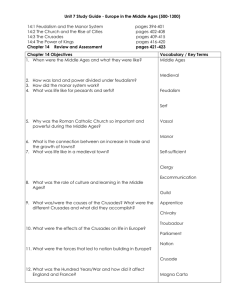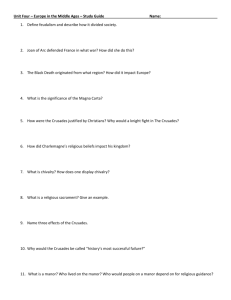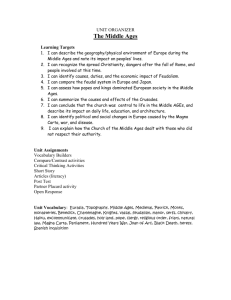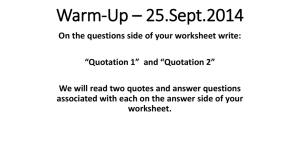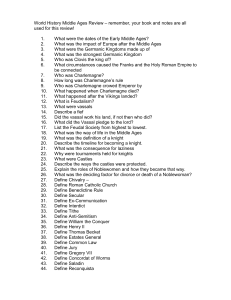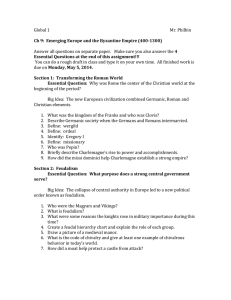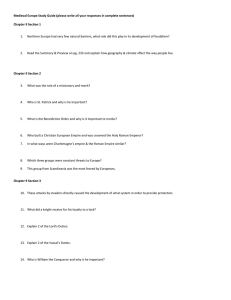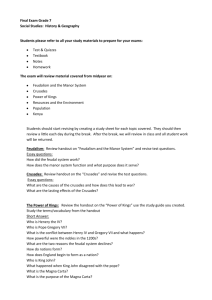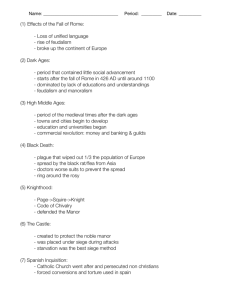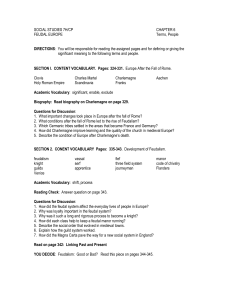Social Studies Chapter 1—Section 1 Review Sheet
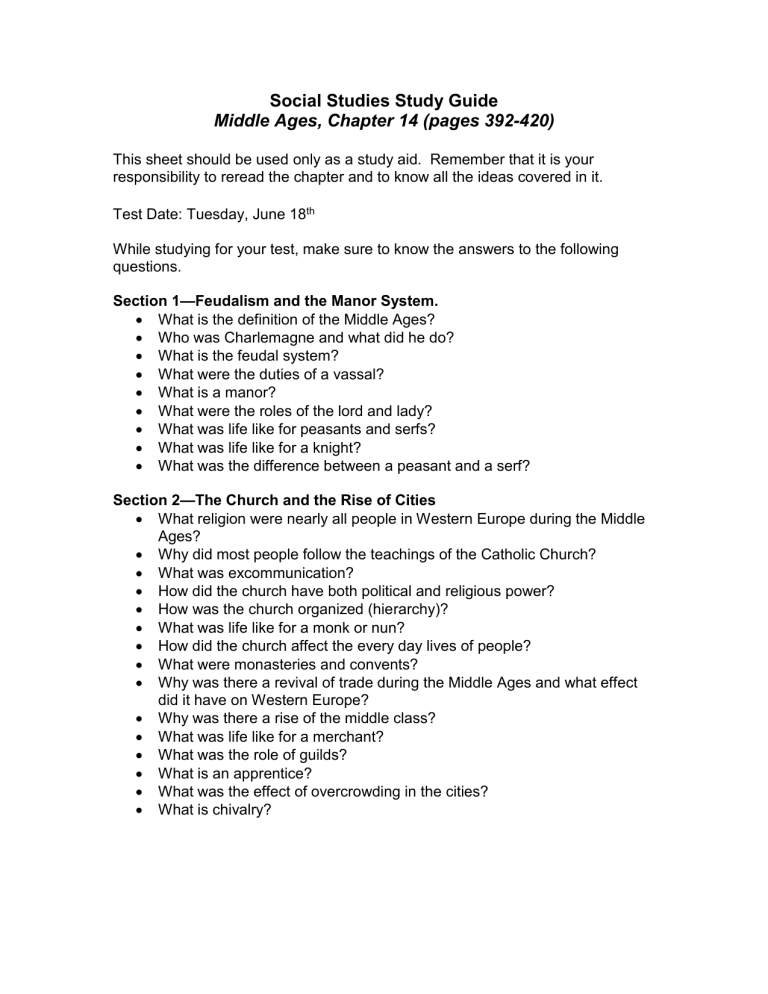
Social Studies Study Guide
Middle Ages, Chapter 14 (pages 392-420)
This sheet should be used only as a study aid. Remember that it is your responsibility to reread the chapter and to know all the ideas covered in it.
Test Date: Tuesday, June 18 th
While studying for your test, make sure to know the answers to the following questions.
Section 1 —Feudalism and the Manor System.
What is the definition of the Middle Ages?
Who was Charlemagne and what did he do?
What is the feudal system?
What were the duties of a vassal?
What is a manor?
What were the roles of the lord and lady?
What was life like for peasants and serfs?
What was life like for a knight?
What was the difference between a peasant and a serf?
Section 2
—The Church and the Rise of Cities
What religion were nearly all people in Western Europe during the Middle
Ages?
Why did most people follow the teachings of the Catholic Church?
What was excommunication?
How did the church have both political and religious power?
How was the church organized (hierarchy)?
What was life like for a monk or nun?
How did the church affect the every day lives of people?
What were monasteries and convents?
Why was there a revival of trade during the Middle Ages and what effect did it have on Western Europe?
Why was there a rise of the middle class?
What was life like for a merchant?
What was the role of guilds?
What is an apprentice?
What was the effect of overcrowding in the cities?
What is chivalry?
Section 3
—The Crusades
What is the Holy Land?
Why did Pope Urban II call the people of Europe to war with the Muslim
Turks?
What were the Crusades, and what were they like?
Who are pilgrims?
What were the results of the Crusades?
Section 4 —The Power of Kings
How did nobles become powerful in the 1200s?
How did town development, the Crusades, and kings later cause the weakening of the noble class?
How did kings become more and more powerful?
How did King John anger the nobles and church leaders?
What was the Magna Carta and what did it limit?
What were two things the king could no longer do now that he had signed the Magna Carta?
What did the Great Council later become?
Later, how did the Magna Carta, surprisingly, increase the king’s power?
What were the causes for the decline of feudalism?
Key terms to know: barbarians, secular, Middle Ages, medieval, Charlemagne, feudalism, manor, vassal, lord, knight, chivalry, serf, peasant, pope, Roman
Catholic Church, clergy, excommunication, guild, apprentice, Holy Land,
Crusades, pilgrim, nation, Magna Carta, Model Parliament, black death.
